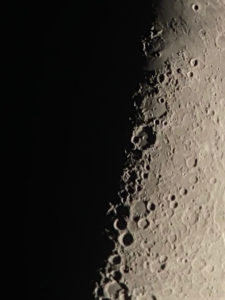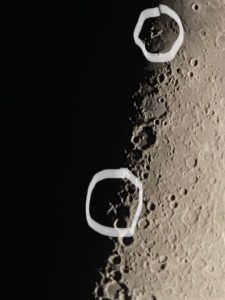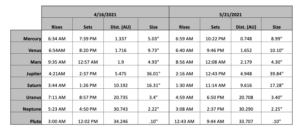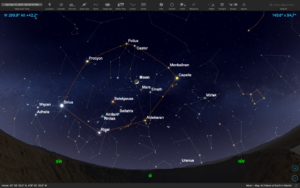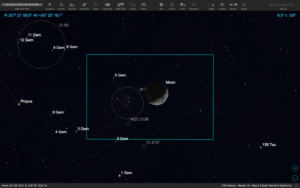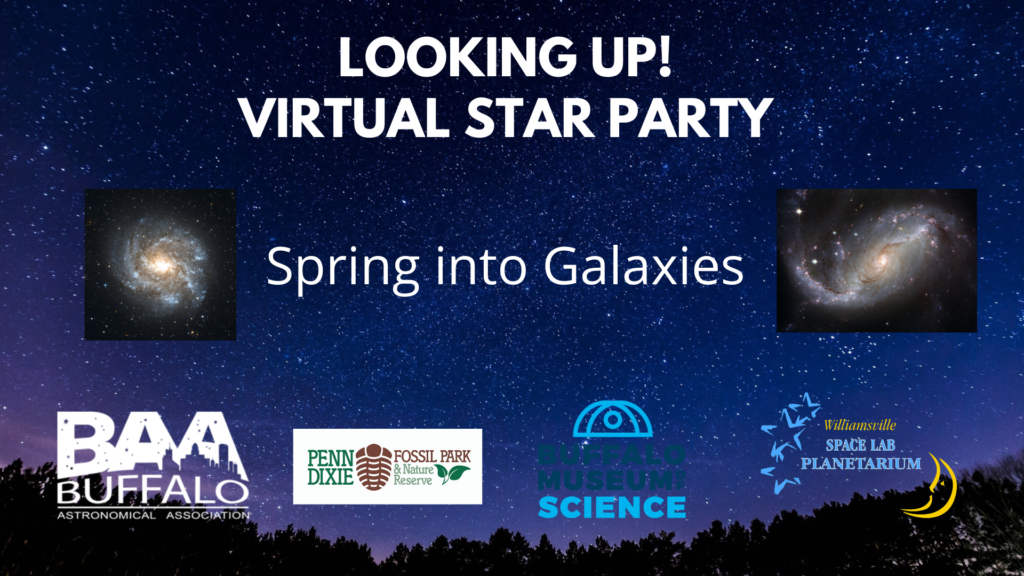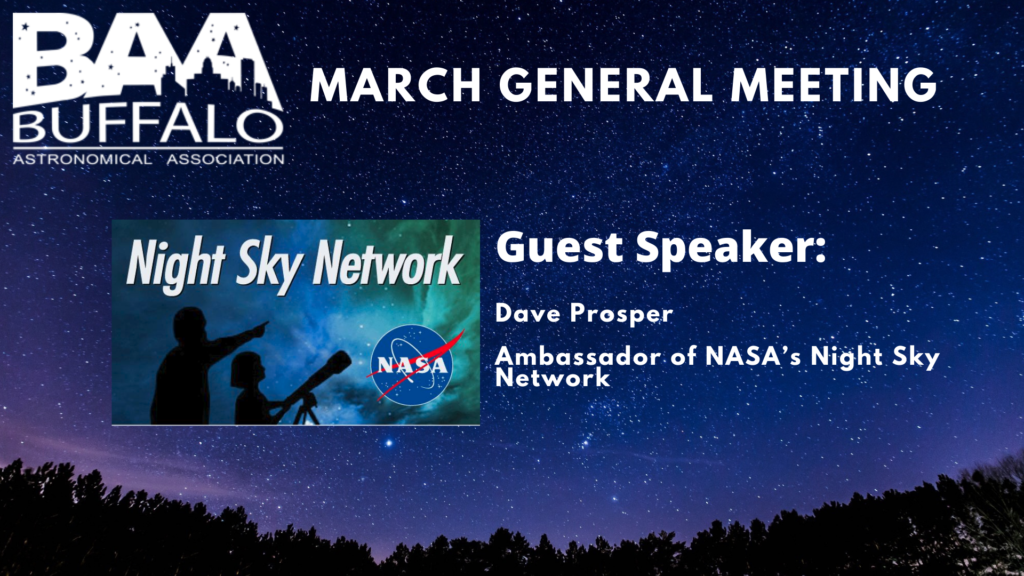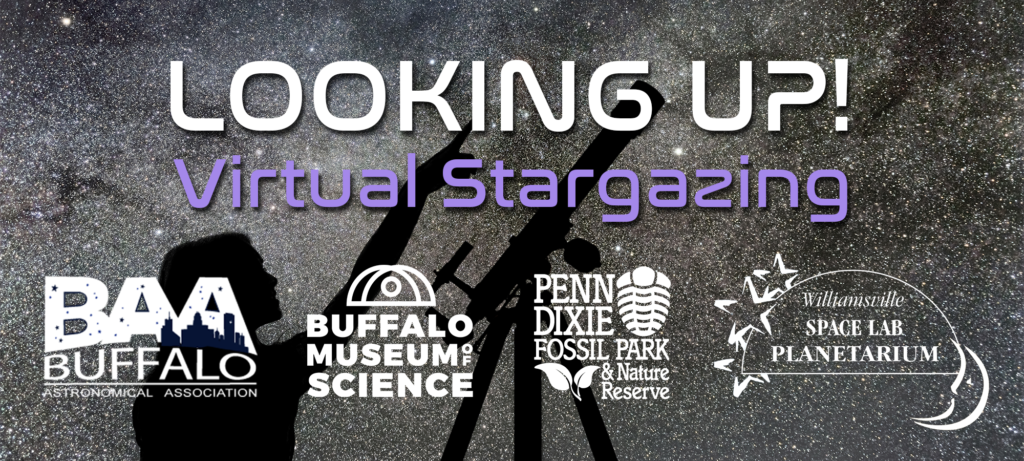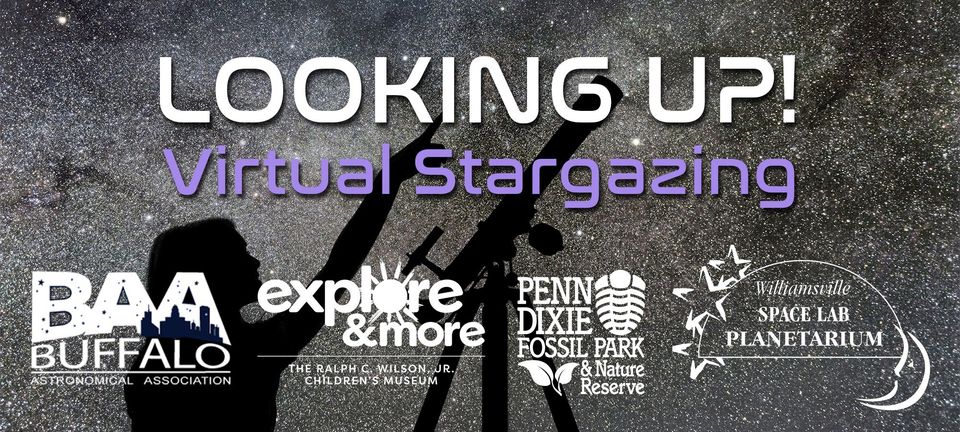Hi all,
If you’re a fellow astronomer, you know that March is Messier time. Over the past month the BAA has held two Messier-based events, so I wanted to do a somewhat-delayed recap that hopefully inspires you to seek out these objects over the coming spring and summer seasons. (It’s also a good excuse for me to post a visual observing log.) Read on to see!
Virtual March Messier Madness Recap – March 20th
Our Looking Up! March Messier Madness event was held on a crystal clear Saturday night. A few members participated by showing live views, like Ernie and Pat demonstrate. Ernie’s view (leftmost image) is of open cluster M35, and Pat captured the M81+M82 (middle) and M51(right) galaxies. Click on any of the images to view them at full size:

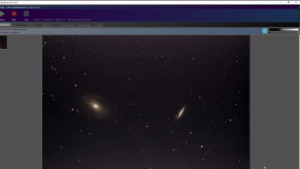
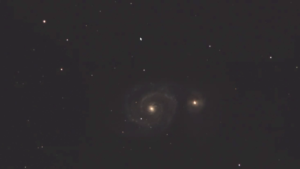
Holly from the Buffalo Museum of Science gives us a simulated runthrough of a Messier Marathon, featuring pictures taken by BAA members at the Beaver Meadow Observatory:
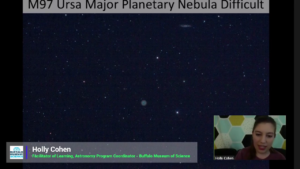

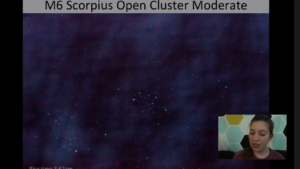
Tim, also from the BMoS, shows us a detailed presentation on Charles Messier, while Paul from Penn Dixie tells us about his favorite deep-sky objects that are not too hard to find! All are Messier objects themselves, in fact:


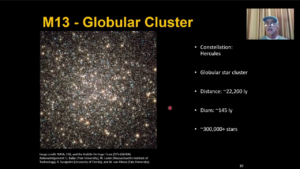
Lastly, Ernie puts 8 of his favorite Messier objects head-to-head to find his “Final Four” (with info on each object and when to see them):
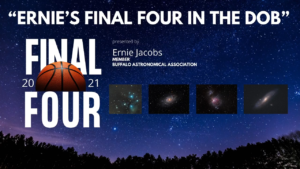


The full video is available to watch on-demand on our Facebook here, if you want to catch up. I also want to give a shoutout to Dennis and Gene for their amazing behind-the-scenes work that make the virtual events look better and more professional every month.
By the way, if you watch the on-demand video, keep an eye out for those galaxy Messiers in particular, since our next event on April 17th (that’s tomorrow night as I post this!) features the spring galaxies specifically. Tune in at 8:30PM on Facebook or Youtube.
Okay, plug over. Let’s move on to our next event…
Virtual BAA Messier Marathon – March 13th
The BAA member Messier marathon started around 7:30PM over Zoom. One highlight was Ernie’s live imaging, where he took two-minute exposures of each Messier object. Overall, Ernie captured 28 objects for us: M1, M35, M36, M37, M38, M40, M41, M42, M43, M44, M45, M46, M47, M48, M50, M63, M65, M66, M78, M81, M82, M95, M96, M97, M105, M106, M108, & M109.
Click on any of the images to get a closer look:

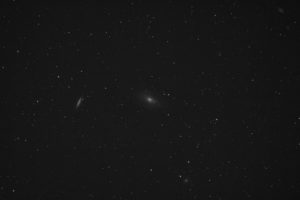
M42 – the Orion Nebula M81 and M82 – Bode’s Galaxy and the Cigar Galaxy
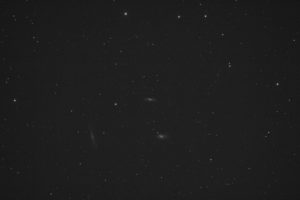
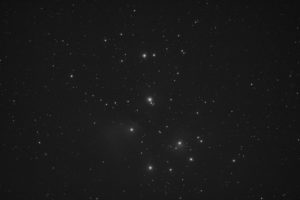
M65, M66, and NGC 3628 – the Leo Triplet M45 – the Pleiades
While all this was going on, I was out listening to the call and doing a marathon at the club’s observatory at Beaver Meadow. I ended up visually observing 100 objects, using the Celestron C14 and Televue NP101. (Keep in mind that this was on a go-to scope, so the computer did all the hard work.) Out of the 110 total Messier objects, I missed these — M74 (twilight object), M69, M70, M54, M55, M75, M2, M72, M73, and M30 (dawn objects.)
I took quick, general notes on each object as I observed using a numbered Messier Marathon Log (link to PDF) from 10 Minute Astronomy. I also utilized a Messier Marathon Checklist from the American Association of Amateur Astronomers (page 2 of this PDF) to help me mentally group them.
I won’t bore you with 100 individual observations, but below is a general timetable of my night, along with a few notes here and there:
| Time |
Observations |
| 7:20PM |
Started the marathon. About ~30F, clear skies, but quite windy. Luckily this was less of an issue than if I had been outside on the 20″ Obsession.
From this time until 9:45PM I observed all of the twilight objects (except for M74) and got most of the way through the Leo/Big Dipper/Canes Venatici areas. |
| 9:45PM – 10:20PM |
My first long break of the evening due to clouds coming in from the north. |
| 10:30PM – 11:50PM |
Another break as I was waiting on Virgo to rise further and was pretty cold too. Luckily the Zoom call kept me company. |
| 12:30AM – 1:40AM |
Final long break of the night, once again due to clouds. I observed a few objects around 1:10AM but was mostly going in and out of the observatory waiting for it to get clear.
Observing after this was mostly picking objects off as they rose and revisiting visual objects I like to pass the time. |
| 2-3AM |
Vanished due to Daylight Savings taking effect (spring forward!)
|
| 4:30AM |
Summer Milky Way visible in the east as Lyra, Cygnus, and Aquila continued rising. Things started heating up after this — you really become aware that you’re fighting daylight in these final hours.
|
| 6:10AM |
Observed my last object — M7 (the Ptolemy Cluster.) |
| 6:13AM |
Viewed the zodiacal light for the first time in the southeast, right before sunrise.
|
| ~6:30AM |
Finished up and began packing. |
Some highlights for me during the marathon were many of the Sagittarius objects. Sagittarius is just such a rich area of the sky for visual observers, and a joy to scan through in summer. Since they were rising in the east (and daylight was rapidly approaching) I viewed many of the easy, larger objects such as M24 (the Sagittarius Star Cloud) and M8 (the Lagoon Nebula) using my 10×42 binoculars, then went back using the C14 when I could to capture some close-up glimpses.
Some other objects I really enjoyed:
- M51 — the Whirlpool Galaxy, probably my favorite object of the night, with visible spiral arms
- M27 — the Dumbbell Nebula, a regular favorite of mine
- M17 — the Swan Nebula, another complex Sagittarius object
Lastly, I viewed a few things I’d never taken the time to observe before, such as M78 and M46. M46 was neat to me in particular, because the Messier object itself is a normal open star cluster, but a planetary nebula (NGC2438) is also visible. A nice bonus when you’re trying to cross off the many open clusters in that region of the sky! Here are two images of M46 and NGC2438 from the March Messier Madness event so you can see how they look:


SEDS’ Best Messier Marathon Dates page puts April 2, 2022 as the primary weekend to hold a Messier Marathon next year, with March 5th serving as a secondary weekend. Hopefully I can try again next year and manually find as much as I can with a Dobsonian, but it was fun just to get out since I didn’t do a lot of observing this winter. Anyway, it’s not like you can’t see Messier objects for the remainder of the year, so get out there when you can and observe or image some of your favorites. See you around!
–Emilyann
